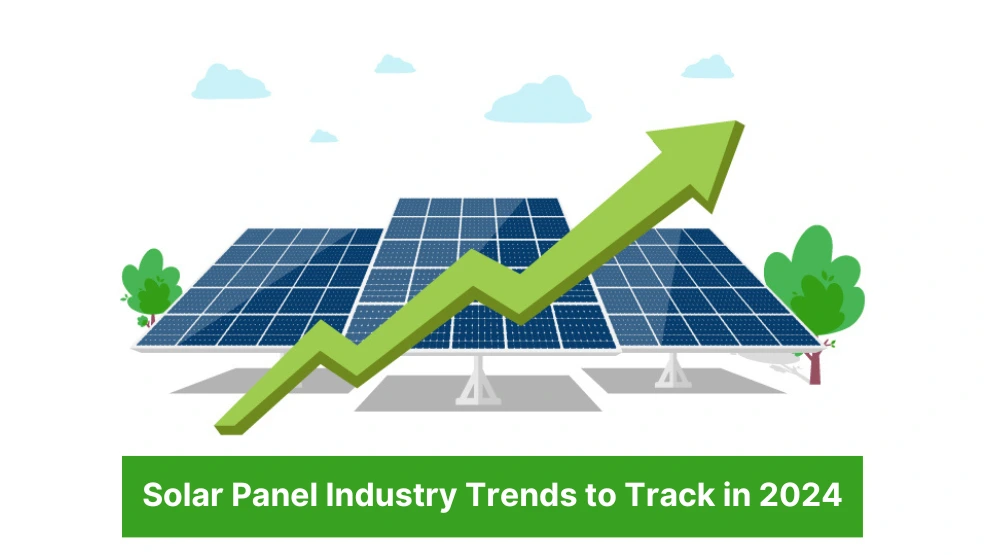The pandemic affected many industries. It caused upheaval and forced a change in the way people do business and what people expect. Even government regulations have changed. While we still feel the growing pains of the “new normal” one thing is clear, the world we live in now has provided us with a new foundation upon which to build. And the solar industry, like many others, has the opportunity to profit from it.
Numbers indicate that there are 387 solar businesses in the US market as of 2022; this is a 20.1% increase compared to 2021. According to a new report, Los Angeles, San Diego, Las Vegas, Honolulu, San Antonio, New York, Phoenix, San Jose, and Albuquerque—now generating nearly 3.5 gigawatts of solar power more than the entire country. The solar power industry is expanding rapidly across the country.
While a sudden shift in the market may seem exciting, remember to be wary of volatility within the industry; make sure you don’t outpace yourself. It can be tempting to grow too fast, only to not be able to afford the cost of your infrastructure once the boom is over.
Below we have listed the latest trends in solar. Keep reading to gain a better understanding of how to implement them in a way that makes sense for your company.
Government measures will make a huge impact
As of January 2024, IBIS World estimates that 11,091 solar panel installation companies are operating in the United States. Thanks to a secure supply chain bolstered by tax incentives, this number is set to increase as the commercial and residential markets continue to expand. According to the report, Los Angeles, San Diego, Las Vegas, Honolulu, San Antonio, New York, Phoenix, San Jose, and Albuquerque—now generating nearly 3.5 gigawatts of solar power more than the entire country. The solar power industry is expanding rapidly across the country.
Currently, the government is working to promote renewable energies in order to reduce carbon emissions and slow climate change. To this end, they have taken measures to increase domestic production of solar panels—which is great for those in the industry. Previous tax credits have helped lay the groundwork for the current boom in the solar industry; business owners were able to leverage these tax credits to their advantage and will be able to continue doing so through 2024.
Additionally, tariff exemptions have been granted by the government that will impact solar manufacturers, making needed materials more accessible and helping ease supply chain issues. Consumers are also being encouraged to switch. Subsidies are being offered to individuals and institutions as well, not just businesses.
Demand for solar products will increase
The demand for sustainable energy is growing. Solar businesses will continue to be innovative and bring new products to market in order to satisfy customer demand. Solar cells continue to be fabricated with the latest technology. Scientists introduced new and advanced materials for the development of new solar products. The discoveries enable manufacturers to produce various solar applications, which will be in huge demand in 2024.
Some of the applications that will be in demand are solar carports, solar-powered roads, floating solar farms, and so on. This is an excellent opportunity for the solar industry as it opens up new markets and opportunities. The growing demand will increase the number of jobs.
According to the Solar job census, the solar industry already employed around 230,000 people and is expected to employ up to 90,000 people by 2035. As more and more people become aware of the benefits of solar power, we can expect to see even more opportunities and growth in the years to come.
Supply chain strategies will continue to evolve
The solar industry continues to evolve new supply chain strategies. International trade tensions have negatively impacted the solar industry due to tariffs and sourcing difficulties. For the first time, supply shortages have caused an increase in the cost of solar products.
Extension of import tariffs, an import ban on Chinese companies, and shortages of silicon have all contributed to supply chain shortages. But US energy developers continue to innovate and develop new strategies to address their supply chain issues. Alternative suppliers and domestic manufacturers are sought after to mitigate sourcing challenges.
US solar manufacturers have started to adopt different manufacturing practices and use substitute materials to reduce foreign market dependencies. Though the pandemic damaged the supply chain, manufacturers are exploring new technologies and techniques to mitigate the limitations; this is good news for businesses and individuals alike.
Distributed solar capacity to reach 100 GW
Regional authorities are implementing color-coded zoning systems to regulate solar installations, influencing the profitability and feasibility of these projects. While a decline in residential solar installations is anticipated, the commercial and industrial (C&I) sectors continue to offer substantial growth opportunities.
Industry forecasts suggest that the combined capacity of residential and C&I solar installations is poised to reach 100 GW. To achieve this milestone, there will be a concerted effort to explore regions with higher electricity prices and areas designated as green zones, optimizing market development and ensuring sustainable growth in the distributed solar sector.
New tariffs on Chinese exports
The U.S. government has introduced new tariffs, and the renewable energy sector will face significant challenges and opportunities due to new tariffs introduced by the Biden administration. While these tariffs aim to support domestic production and address unfair Chinese trade practices, they could also increase costs for solar panels, wind turbines, and electric vehicles, potentially slowing the rapid adoption of clean energy technologies.
However, policies like the Inflation Reduction Act and the Infrastructure Investment and Jobs Act are expected to mitigate these cost increases and continue driving the energy transition, aligning with the goals of the Paris Agreement. The ultimate impact will depend on balancing these strategic goals with market competitiveness and global cooperation.
Impact on solar products costs
The introduction of new tariffs is expected to increase the costs of solar products for consumers. These tariffs will tax imports as they enter the U.S., adding expenses for distributors and retailers, which are ultimately passed on to consumers. According to the U.S. International Trade Commission, U.S. importers have historically borne nearly the full cost of tariffs, resulting in higher prices for end users. Additionally, some businesses may exploit the situation by opportunistically raising their prices even further. Consequently, the economic benefits of these tariffs remain ambiguous, with potential negative impacts on market efficiency and household expenses.
Key takeaways
1. Installation of solar panels will continue to grow exponentially. The increasing popularity of solar panels has led to high demand for installations. Job opportunities for solar installations are now more plentiful than those in manufacturing. Solar PV installer jobs are projected to grow 52% from 2020 to 2030, much faster than the average compared to other occupations.
2. The cost of solar energy will continue to decline, making it more affordable for businesses and homeowners.
3. Renewable energy will become increasingly critical as more countries begin to phase out fossil fuels.
4. The costs for solar panels, wind turbines, and electric vehicles will increase, potentially slowing the rapid adoption of clean energy technologies. The ultimate impact will depend on balancing these strategic goals with market competitiveness and global cooperation.
5. Solar software is enabling the solar business to streamline its operations. The importance of solar software will continue.
6. Since technological advancements have reduced the operating costs of the solar panel industry. The usage of drones, aerial thermography, solar service management software, and artificial intelligence helps to reduce operational and maintenance costs.
7. The technology continues to evolve and increase its durability in 2024. Third and fourth-generation solar panels underwent rapid development in 2021. For the past few decades researchers and scientists have been constantly striving to produce panels with higher efficiency. The NREL has set a new record for efficiency of 39.5%.
8. Solar software is enabling the solar business to streamline its operations. The importance of solar software will continue.
Road ahead
With each passing day, the solar panel industry gains more traction and popularity. Though the pandemic and supply chain limitations have been speed bumps along the way, the solar industry continues to advance. Tremendous support provided by Government and recent developments have provided new opportunities for solar manufacturing, and business owners can utilize these new opportunities to expand their business.





